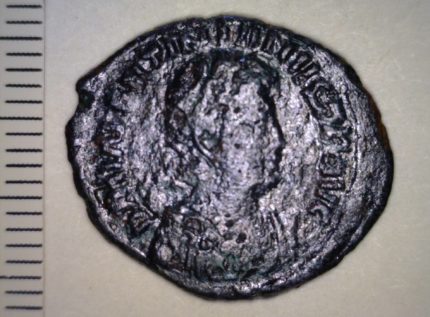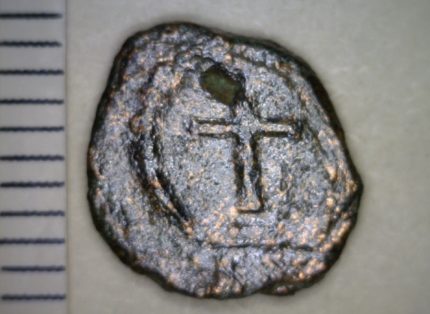Archaeologists have unearthed a hoard of 119 ancient coins buried under a collapsed building in Lechaion, ancient Corinth’s main harbor. The coins were excavated during the 2016 and 2017 dig seasons and appear to have been buried in a very shallow hole. They were found just 12-16 inches under the modern surface.
The coins, many of which are made of bronze, were discovered in excavations carried out in 2016 and 2017; some of the coins still need to be cleaned. No human remains were found with the coins, archaeologists said.
The collapsed building is located beside the remains of what may be a work yard, which has the remains of iron slag, unworked iron, cooked animal bone and a concrete basin, archaeologists found.
The earliest coin in the hoard dates to shortly after the death of Roman Emperor Constantine the Great (who reigned from A.D. 306-337), while the most recent two coins in the stash date to the reign of Byzantine Emperor Anastasius I (who reigned from A.D. 491-518), said Michael Ierardi, a professor of classics at Bridgewater State University in Massachusetts, who is studying the hoard. Based on their weight and size, the coins likely date to sometime between A.D. 491 and 498, before Anastasius I reformed the Byzantine Empire’s coinage system, Ierardi said.
There has been some discussion on the “mystery” of why whoever buried the cash didn’t come back for it, but it doesn’t seem all that mysterious to me. Lechaion was destroyed by an earthquake in the late 6th century A.D., and there were many earlier seismic episodes of destructive force. I wouldn’t be surprised if that roof collapse was the result of an earthquake that either claimed the hoarder’s life or forced him out of town.


Oh my…. as an avid collector of ancient coins, the way the coin shown has been cleaned makes my skin crawl…. No patina remaining at all! :blankstare:
How many ‘souvlakia’ fast food meat skewers could with those 119 coins possibly have been afforded? Would it be enough for -let’s say- a party (i.e. drink and ‘entertainment’ included)?
Examples for coinage are 1 aureus = 400 asse (=1600 quadrantes) or -to the end of the Empire- 1 solidus = 7200 nummi (or “coins”). Anastasius’ monetary reform of 498 is seemingly viewed as the ‘start of Byzantine currency’.
At the ‘School for Afro-Oriental Studies’, they had an artist that was nick-named as ‘The Earthquaker’(!), and -much to my surprise back then- their roof did not collapse :ohnoes:
Every time I scan this interesting post I think at first that it reads “Leprechaun dig unearths coin hoard”! The power of silly word association.